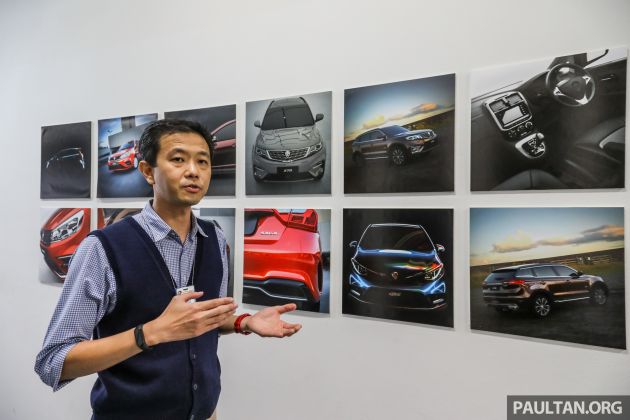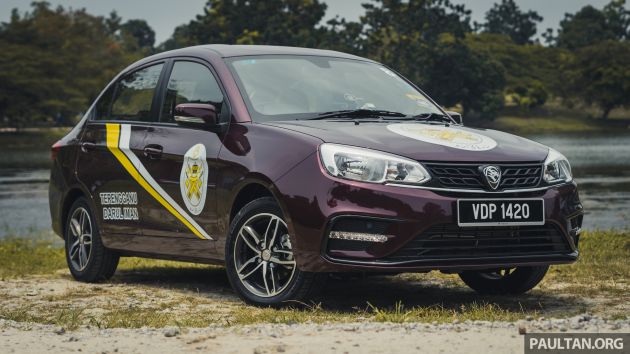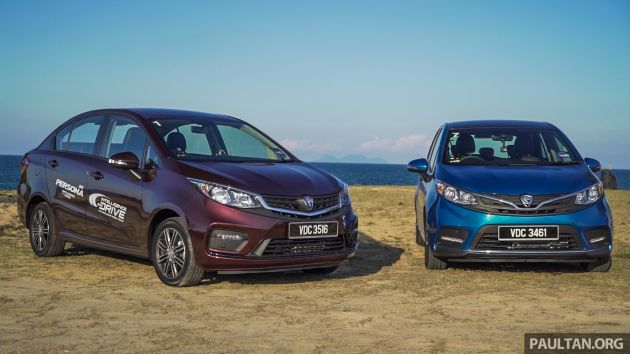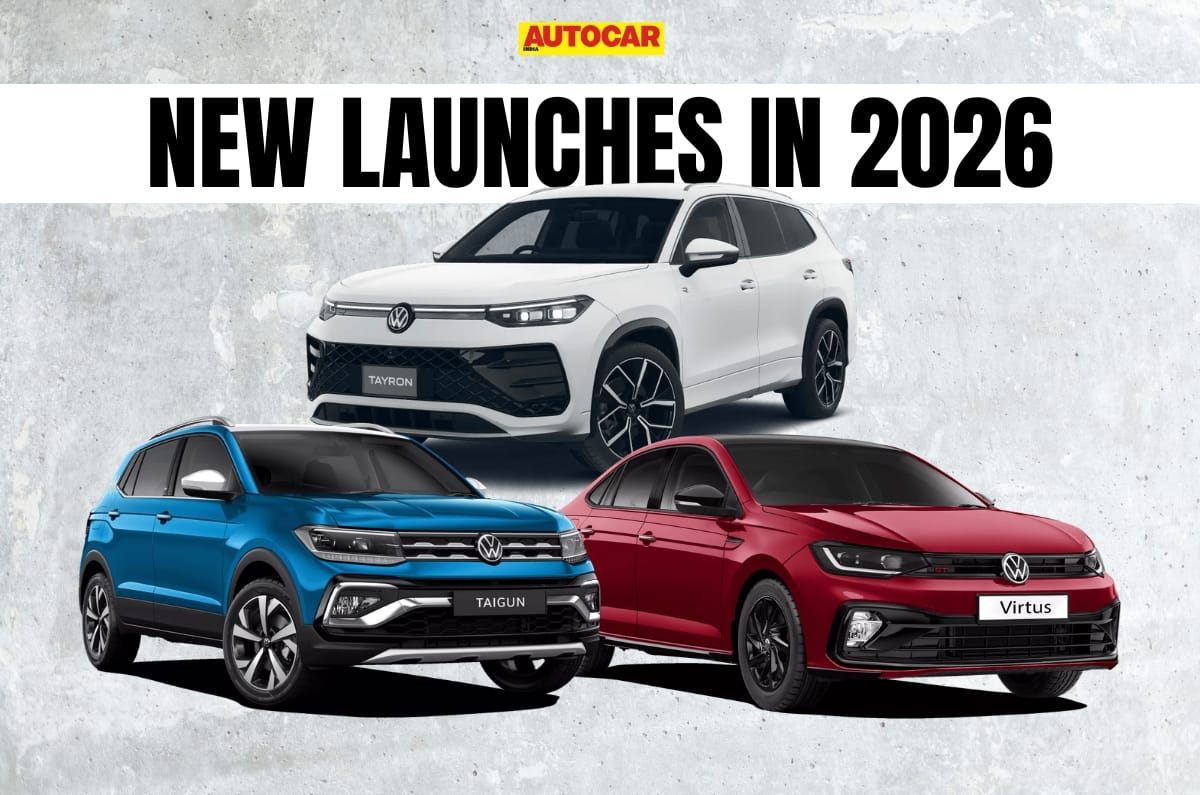35 years of Proton – we talk to Azlan Othman about the evolution of design, and what to expect for the future
Earlier this month, Proton celebrated the 35th anniversary of its first car, the Saga. It had already been a long journey since Tun Dr Mahathir Mohamed mooted the idea of a national carmaker in the late ’70s, and the launch of the affordable sedan on July 9, 1985, was a culmination of the premier’s dream.
In the intervening decades, the company evolved from producing rebadged Mitsubishis to designing and engineering cars under its own power. It hasn’t been the smoothest of transitions, as Proton struggled with the ever-changing direction of a succession of management teams. Still, the fundamental strength and competence of its design department should not be underestimated.
One person who has been steadfast throughout is Azlan Othman. The design boss was as fresh-faced as they came when he joined Proton not long after graduating, after a stint at one of its vendors. The year was 1997 – the Petronas Twin Towers began operations, Radiohead’s landmark album OK Computer hit the shelves, and Southeast Asia was in the grips of a severe financial crisis.
At the time, Proton was putting the finishing touches on its two “performance” models, the Satria GTi and the Perdana V6, and was already well into the development of its first car designed in-house, the Waja. Like many of its contemporaries, the company was entering the world of digitalisation and was looking to build expertise in computer-aided design and engineering software such as Catia and Alias.
“They bought the systems, but they didn’t really know what they do with them,” Azlan chuckled. “Engineering-wise, they were very clear, they wanted to do engine drawings and make 3D shapes and build moulds, but design-wise they were like, “Hmm…”
“They knew I was a tech person, so they asked if I could maybe combine design with technology and make use [of the software]. So I thought, why not have a go at this?”
Proton also still had the assistance of Mitsubishi, from which it learnt how to design its own cars. “In those early years, we were learning and absorbing everything as much and as fast as we could. That was the objective,” Azlan said, adding that by then the company was already capable of putting its own colour and trim on the Mitsubishi-based models.
A paradigm shift was on the horizon, with Proton moving from a Japanese-led era to one that would be heavily inspired by its recent acquisition of Lotus (Azlan called it the “British era”). Being responsible for branding then, he explained the design of the then-upcoming logo, which moved away from bearing explicit references to the Malaysian flag – a problem when the company had (and still has) global aspirations.
“At the time, everything was surface level. If you wanted to associate a car with Malaysia, you had to have the star and the crescent; it was very literal. And when you went somewhere else, you had to change the badge to suit the market. So corporate image control wasn’t really there.”
The main idea that Azlan was trying to push – whether it was the logo or the cars – was what he called “deep thinking”, which looked into the creation of more nuanced references to Malaysian and regional culture, rather than obvious iconography. In the case of the logo, this resulted in the use of a tiger head – the species as a whole isn’t endemic to Malaysia, but many Malaysians associate the big cat with the country.
This dedication to “deep thinking” culminated in the design development of the Satria Neo. A true clean-sheet car, it afforded Azlan the greatest amount of freedom – which is why it’s his favourite project. “We worked with Lotus at the time, and I was sent to Coventry and Hethel [in the United Kingdom] to work on the project. The design phase alone took over a year of sketching and modelling, which is really long by today’s standards.”
The goal of the car, Azlan said, was to emulate the visual impact and driving dynamics of the MINI, the iconic hatchback that was reincarnated by BMW at the turn of the millennium. He remembered then managing director Tengku Tan Sri Mahaleel Tengku Ariff as being particularly involved in the process. “He would fly to the UK just for a design briefing,” he said.
What eventually reached showrooms in 2006 was a striking three-door hatchback, with a low roof and a windscreen so raked the sun visors doubled as the driver’s eyebrows. Azlan made no bones about the car’s deep ergonomic flaws: “Ingress and egress were not superb for the car,” he said.
For better or for worse, the concessions in usability resulted in a design that turned people’s heads. “There’s no way today you can get a car with those proportions. There’s no way you can pass regulations,” he said. And the pursuit of handling prowess meant that the body was made to be “super rigid”, making it the perfect base for a race car. “The Lotus [chassis] tuning was spot on.”
Around halfway through his 23-year tenure at Proton, Azlan assumed his current position as head of design. This coincided with a period of relative stability for the company, on the back of Datuk Seri Syed Zainal Abidin replacing Tengku Mahaleel at the helm and strong products like the Saga and Persona hitting the market.
With the new role, Azlan became more involved in defining Proton’s design strategy and future direction, taking him away from day-to-day design work. “I wish I had more time to do direct design work, but I think it’s a given that as you move up, you set the tone from a different perspective.”
He also had a hand in refining the work of the company’s talented designers, making them more suitable for production. “You can have the best sketches – and the younger generation of designers do wonderful work – but perhaps putting them into production wouldn’t be possible without the seniors guiding them,” he said. “What I do is review their work, sketch out areas that need to be improved. I don’t need to sketch the full car, because most of the time, the proportions are already well done by the new designers, they’re good at that.”
While Proton had a brief resurgence before the turn of the previous decade, eroding consumer confidence and ever-stiffer competition led to a dramatic slowing of sales, despite deals with various carmakers and the launch of a slew of new and improved products in 2016. The following year, the company finally entered a far-reaching collaboration with a foreign strategic partner, which, you will all know by now, was Geely.
The arrival of the X70 at the end of 2018 didn’t so much arrest the freefall as light a fire under Proton’s resuscitation. A massive leap beyond anything the company had hitherto produced, its first SUV drove buyers into showrooms and helped push it to second in the local sales charts – a momentum that was sustained with the introduction of four facelifted models last year.
What the X70 wasn’t was a high watermark for Proton Design. Handsome though it may have been, it was recognisably a Geely Boyue, with minor additions like the Infinite Weave grille pattern and Ethereal Bow chrome front trim (and the new logo on the locally-assembled model) being the only real changes to the look.
The lack of large-scale differentiation from the donor car was due to the shortened design process, which had to be conducted simultaneously with the car’s development to bring the vehicle to the market quickly. “We had to finish the design in six months, and everything had to move concurrently,” Azlan said.
With high expectations for the collaboration to succeed and turn a profit, Proton’s designers also settled for a safer approach in an effort to sell more cars. “When Proton got together with Geely, Li [Chunrong, Proton CEO] made one thing clear – we needed to recover, we needed to be back in the black. So, sacrifices have to be made.
“[We had to] make cars that people want, to meet the voice of the customers and meet the volumes that we need to sell. Our designs could not be extravagant; they could not be over the top at that point in time.”
Azlan did promise that future models would have a more distinctive aesthetic. Oh yes, Proton is still committed to building cars from the ground up, and to that end, it is working with Geely to develop a range of new platforms for the next generation of its indigenous cars, namely the Saga, Iriz, Persona and Exora.
Despite recent facelifts adding some X70 cues – as well as features like the Geely Key User Interface (GKUI) – the current models still feel like distinctly separate products. That will change with their replacements, which Azlan said will bear a closer resemblance to the Geely-based cars. “There will come a point where the “legacy” cars will not be the cars you are familiar with today. They may retain the name, but not the look.”
These models will also supposedly push the boat out in terms of design. Remember the “deep thinking” I mentioned earlier? That will go into these next cars to make them look a lot more daring and original. “The deep thinking now is going into those [cars] to come up with something extraordinary,” Azlan said, adding that future models will introduce more design cues associated with Malaysia. “In fact, on one of our new cars coming out, it will even be on the entire alloy wheel.”
As for when we can expect the new cars to come to showrooms, Azlan declined to give a specific timeframe, but he said that they will come “sooner rather than later, hopefully.” To whet our appetites, Proton will also be showcasing concept cars to preview the new models. “I’d like to revive [our concepts]. I’d like to start teasing the public with what Proton Design [is capable of],” he said.
But why would Proton still want to design and develop cars under its own power, when it has the hot-selling X70 and many other Geely-based products in the pipeline? Firstly, we should point out that Geely does not have a particularly strong range of models at the bottom end of its lineup – cars like the Emgrand and Vision sedans and the Vision S1 and X3 hatchbacks-cum-SUVs are quite old now and are neither as modern nor as attractive as the company’s latest and greatest models.
But Azlan also made it quite clear that Proton did not want to use rebadged Geely models as a crutch forever. “There’s no design team in the world that would want to only change badges,” he said. “The [Geely] group has acknowledged that we should be the centre of excellence for right-hand-drive [vehicles]. To be able to achieve that vision, we at some point will have to develop our own products.”
The ability to design the cars by itself would also allow Proton to cater its products specifically for the region, from Thailand to Indonesia. As a bonus, the company can also offer its new platforms to Geely to help create vehicles that could enter new market segments, in order to amortise the cost of development.
“When you think about China, you think SUVs and big cars, right? No one [there] is really looking to build efficient people movers or small cars, because they think the Chinese don’t want them. But we feel differently,” he said.
The benefits of being part of the Geely group extend to the design team. Proton can leverage the talents and capabilities of various global design studios, and it works the other way around, too. “Recently, we received quite a number of requests to participate in global design competitions within the Geely group. I’m not allowed to mention [the details], but they are high-profile projects that we were asked to submit proposals.”
With all that’s said and done, what is the legacy of Proton Design over its 35-year history – especially from the public’s perspective? Azlan responded with surprising candour. “I’ve come to realise that there will always be supporters and detractors no matter what you do; no matter how the great the products are,” he said. “I think they understand only what they see or read out there in the media; there are lots of [assumptions] that are not necessarily true.”
“Unfortunately, we can’t tell anyone 80 to 90% of what we do here. Even the things I’m telling you right now are pretty surface level, so how are people going to be able to understand the complexities of the process?”
And yes, before you ask, the designers do read and listen to public feedback, both positive and negative – including all of you posting in the comments here! “It can be very damaging, actually, for designers. You have to take a step back and not listen to them; you have to stay true to what you know and what you believe.
“That’s where leadership plays a role. If you are very weak, then it’s very easy to succumb to all the negativity that you hear and read. Sometimes I pity my designers because I know they read these things. Especially when they’re young, and they’ve just joined the team, they feel very troubled, whereas, for us, we’ve been in the business in a long time, we have to tell them that it’s OK.”
The tie-up with Geely has also invited a whole host of unwelcome questions. “We get asked all the time, “Do you even really design anymore, now that you’re with Geely?” That already paints a very negative picture,” Azlan said. “But we can’t say that we’re working on this or that, so the story isn’t finished.”
The good news is that despite all that, it’s clear that the design team is still looking forward to creating exciting new cars, and yet it hasn’t lost sight of what’s important. Vehicles like the recently-introduced locally-assembled X70 and Saga Anniversary Edition “aren’t showstoppers,” Azlan explained, “but they’re important in the grand scheme of things. We have to recover before we can reap the benefits later on.”
The team is instead reserving its wealth of creativity, talent and resources for the cars that are on the horizon. “Leave that to the new cars on the new platforms,” Azlan said. We can’t wait to see what’s in store.
The Proton Saga Anniversary Edition, built to celebrate Proton’s 35th anniversary, was launched earlier this month. Based on the 1.3 Premium CVT, it was finished in black with yellow accents inside and out and was priced at the same RM39,300 as the regular model. An option package, which added a bodykit and a few extras, was priced at RM2,035. All 1,100 units were sold out in just five days.
























GALLERY: Proton Saga Anniversary Edition 




























The post 35 years of Proton – we talk to Azlan Othman about the evolution of design, and what to expect for the future appeared first on Paul Tan's Automotive News.
from Paul Tan's Automotive News
Read The Rest:paultan...
















Post a Comment